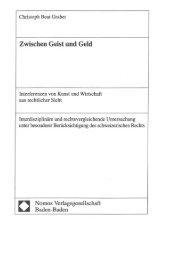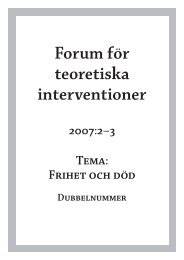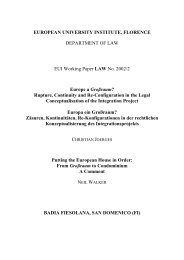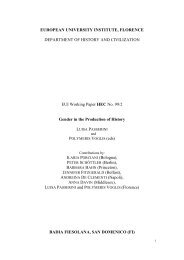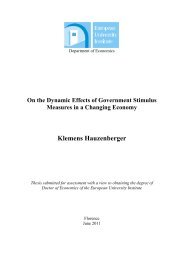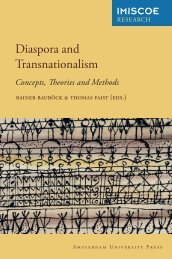Sinziana-Elena Poiana Ioana Lupea Irina-Madalina Doroftei Alina ...
Sinziana-Elena Poiana Ioana Lupea Irina-Madalina Doroftei Alina ...
Sinziana-Elena Poiana Ioana Lupea Irina-Madalina Doroftei Alina ...
Create successful ePaper yourself
Turn your PDF publications into a flip-book with our unique Google optimized e-Paper software.
DAHR is part of the Romanian government since 1996, except the period between 2000 and 2004 and<br />
the year 2009. It held ministerial offices, positions of State Secretaries and of directors of ministries,<br />
prefects in the counties with Hungarian population, management positions in other public institutions.<br />
DAHR obtained these positions because of a distribution algorithm used among the parties forming<br />
the Government coalition to decide upon the nomination of the management of the Romanian central<br />
and local administration, and not because of any ethnic criteria. Hungarian leaders have called many<br />
times for proportional representation for Hungarians in sub-state institutions, but in vain. At the<br />
moment, no public information with respect to the representation of Hungarian minority in the public<br />
administration is made available. The Civil Service Agency does not collect data on the ethnic<br />
affiliation of civil servants, since this would be seen as a violation of the individual liberty to not<br />
declare one´s ethnic affiliation.<br />
To this day, the ethnic Hungarians living in Romania are not permitted to hold decision-making<br />
positions in the defense, public order and national security institutions. In 2009, during his electoral<br />
campaign in the Szekler counties, the president of Romania, Traian Băsescu, stated that he was in<br />
favor of hiring Hungarians in the national security system and of promoting them to command the<br />
Romanian army. Yet, the president’s declarations were not followed by actual measures. Under<br />
DAHR’s pressure, which becam eagain part of the government in 2010, the police education<br />
institutions published open competitions dedicated to ethnic Hungarians.<br />
Departments for the protection of minorities operate within the government and the ministries where<br />
Hungarians hold the largest number of management positions, by appointment. The main institutions<br />
for the protection of minorities are the National Council for Minorities, the Department for Interethnic<br />
Relations, the Institute for the Study of Minority Issues and the National Council for Combating<br />
Discrimination. The organizations of the national minorities represented in the Parliament receive<br />
financing from the state in the same way the political parties do. However, in order to promote<br />
ethnical, linguistic, cultural and religious diversity, the government grants special funds for the<br />
projects dedicated to minorities, through the Department for Interethnic Relations.<br />
Literature review: when ethnicity and citizenship clash, the concept of “dual loyalty”<br />
Mr. Barna’s action was perceived by Romanians as a confirmation of their historical suspicion that<br />
Hungarians are not 100% trustworthy citizens, being more attached to their own ethnicity than to the<br />
State. Dual loyalty arises when a citizen or group of citizens holds political allegiance to another state<br />
or entity which could challenge their loyalty to the state, according to Ilan Zvi Baron. Conflicts<br />
between loyalty to a national state, on one hand, and solidarity with an ethnic community, within or<br />
outside the boundaries of that state, on the other, may lead to accusations of “dual loyalties” (Smith,<br />
1986). Transylvania, nowadays, a border region between Romania and Hungary (see Figure 1), has<br />
long been an area of conflicting nationalisms (Mungiu-Pippidi, 1999). Romania's EU integration,<br />
supported by neighboring Hungary, was the most important common goal for both the Romanians and<br />
Transylvanian Hungarians, and sidelined for a short period of time the historical rivalries. Following<br />
Romania’s EU accession in 2007 there were hopes that the “Transylvania issue” will lose salience. But<br />
once the common goal was achieved, the old adversity reappeared, largely due to politicians in both<br />
Romania and Hungary. Three recent political events had once more brought it to the fore: the<br />
adoption, of a new citizenship-law by the Hungarian government in 2010, which enables any<br />
Romanian citizen of Hungarian ethnicity to also acquire Hungarian citizenship; in 2011, the escalation<br />
of demands by an active minority of local Romanian politicians of Hungarian ethnicity for the<br />
designation of a special status-area comprising the counties of Harghita, Covasna and –Mureş, an area<br />
vaguely matching the medieval Szeklers Land; in 2011, the initiative of the Romanian government,<br />
backed by Traian Băsescu, the president of Romania, to undergo a territorial-administrative<br />
reorganization policy, based on the European NUTS II regions, proposal which clashed with the<br />
DAHR demands .<br />
58



